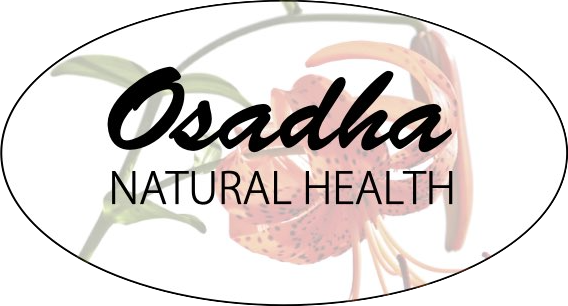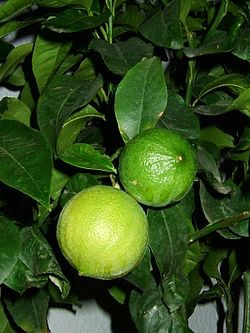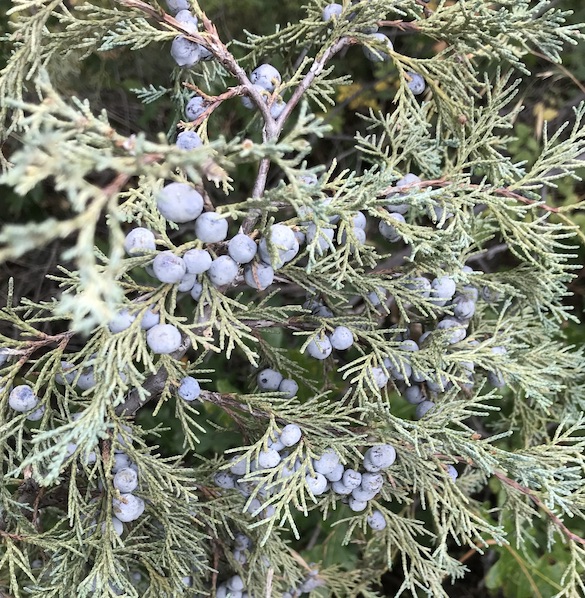~~~
Content © Dr. Anna Marija Helt, Osadha Natural Health, LLC. Permission to republish any of the articles or videos in full or in part online or in print must be granted by the author in writing.
The articles and videos on this website for educational purposes only & have not been evaluated by the Food and Drug Administration. This information is not intended to diagnose, treat, cure, or prevent any disease or to substitute for advice from a licensed healthcare provider.
I’ll be adding these over the coming days…
Bergamot – Citrus bergamia, aka. C. aurantium var amara , C. aurantium subsp bergamia
- Eurasian native. aka. Bitter Orange.
- Don’t confuse with “Wild Bergamot”…a mint/Monarda species (aka. Bee Balm)
Some History & Lore
- Oil 1st distilled in Bergamo, Italy. Fruit also shaped like Bergamot Pear. One or both of these is responsible for the name
- The distinctive scent of Earl Grey Tea is scented with Bergamot
- Was used for fevers and as an antiseptic at least as far back as the 16th century
- Used in spells to attract money, success in endeavors
Some uses – see safety notes regarding skin application
- Respiratory – Cold, flu, immune stimulant. Eases congestion, helps bring down fever. Good as a steam. Can dilute furanocoumarin-free Bergamot in carrier for chest/back rub5
- Genitourinary infections – Furanocoumarin-free dilute in carrier and rub over lower abdomen
- Skin – growths, herpes outbreaks (cold sores/shingles), eczema, fungal inf. Deodorant using furanocoumarin-free (good w/ Cypress)
- Muscle pain – liniment (diluted in oil or alcohol)
- Indigestion – as a belly rub diluted in carrier oil
- Mood – uplifting and calming. OCD, mood swings – inhaled in steam or inhaler, diffuser. Diluted (fc-free) & added to bath but see cautions. Great, sunny oil to promote joy
- Insomnia – diffuser, or a drop added to herbal sleep pillow (not to pillow case)
- Cognitive – focusing (blends well w/ Lavendar, Rosemary)
- Perfumery – lovely high note. Blends well w/ florals, conifers, resins (myrrh, frank, etc). Harmonizer.
- Cooling in TCM. Associated with Liver/Wood element – anger, irritability
Safety
- Get certified bergapten/furanocoumarin-free to avoid phototoxic reactions. Can cause severe skin reactions if unrectified oil (berbapten/furocoumarin-containing) is applied to skin and skin is exposed to sun or other uv sources.
- Oxidizes easily (like all citrus oils) due to ? -pinene and other monoterpenes…store in fridge. No topical application after bottle’s been open a year (I’ve had skin irritation from using an old one in the bath)
Vetiver – Andropogon zizanoides, aka Veteveria zizanoides
- Rich in sesquiterpenoids, a heavy oil
History/Lore
- Cooling – Used to make, window coverings. The fibers actually feel cool when wet.
- A deep-rooted grass used to reduce soil erosion and for water purification
- Traditionally used for hot conditions, whether hot/fiery anger or hot weather (as a fan or window screen that’s cooling when wetted with rain), or for heat stroke, fevers.
Some uses
- Grounding, centering for when ‘knocked off base’, panic, deep fear, shock.
- Oversensitivity, insecurity, anxiety
- Burnout/exhaustion. Also, traditionally, for building sexual reserves.
- Dry skin, oily skin, acne. Wounds.
- Bug repellent
- Perfumery – great base note. Don’t need much (will overwhelm blend). Fixative (fixatives preserve a perfume blend).
Safety
- Oils sourced from China, Java, Brazil, & Mexico may contain isoeugenol. Those from India, Reunion, Haiti, Madagascar, and El Salvador don’t contain this. (Isoeugenol is considered an allergen, w/ potential to cause skin sensitization)
Juniper – Juniperus communis
- J communis North American & European native
- Junipers are sometimes called Cedars, but they’re in a different family than Cedars.
History/Lore
- Gin making
- Long history on multiple continents of being burned for protection, worship, ritual
- Branches burned as disinfectant in French hospitals prior to WW2
Some uses
- A warming rub as eo diluted into carrier oil or as infused oil for muscle pain, joint pain or as a ‘warmup” rub for muscles prior to exercise.
- Digestive aid – Eat a berry before meals. Infused oil or diluted eo as belly rub
- Cooking – Berries great with wild boar or other wild meats. Don’t use too many…the flavor is powerful. ~ 6-10 per pound of meat.
- Chronic UTI – Infused oil/diluted eo rubbed on lower abdomen. Extract (not eo) internally. Not for acute/hot UTI, may aggravate the burn. More for low lever, recurring/persistent
- Respiratory – Spastic coughing – Steam of berries/eo, diluted eo or infused oil as chest/back rub
- Anxiety, feelings of fear or vulnerability – Great as a berry/leaf alcohol extract spray. Protection – lovely as a spray made from berry/leaf tincture
- Skin – itching, flaky skin, oily skin, acne, bug bites, boils, eczema as diluted eo or infused oil or hydrosol, depending
- Circulatory stimulant – cellulite, varicosities
- Fatigue – mental and physical – inhaled
- Sleep – insomnia, nightmares. Berries in sleep pillow. Diffuser around bedtime.
Safety
- Juniperus sabina, the source of Savin eo is toxic (as is the eo, just to be clear). It’s a commonly used ornamental shrub, so know the specific identity of the Juniper from which you’re about to harvest berries.
- Oxidizes easily. Store in fridge. Don’t use for skin applications after bottle has been open for a year in order to avoid skin irritation or sensitization.
- Older references saying that the eo is harmful to kidneys has been contradicted by more recent data.
Rose – Rosa damascena, R. gallica, R. centifolia, others
- $$$
- Most chemically complex volatile oil. hundreds constituents – diff types can smell dramatically diff but w/ “rose” note there
- Res shows effects of simply sniffing on endocrine system (cortisol dec in males, T dec in females)
History/Lore
- Was Rose was highly esteemed in Persian medicine. Ibn-S?n? (Avicenna) thought to be earliest scientist to note benefits of the scent of Rose on brain and heart. He also used it for rapid heartbeat and for strengthening memory. Also was used in Persian medicine for inflammation, wounds, headache, GI tract issues, hemorrhoids, muscle pain
- Nostradamus used pills made from Rose petals and other plants to treat plague victims
- The volatile oil of Rose was reputedly discovered at a royal wedding, where Rose petals were floated in a water-filled canal. In the warmth of the sun, rose oil was extracted out of the petals and floated on the surface of the water.
Some uses
- Dysmenorrhea – Used as alcohol extract for pain, or via inhalation, or as part of abdominal massage
- PMS – A controlled study found that sniffing 4% Rose oil just a couple times a day over 5 days during the luteal phase reduced PMS after a couple of cycles
- Aphrodisiac – Ancient link with love. May improve sexual function. Has been used to counter ED caused by SSRI usage
- Research shows that inhaling Rose aromatics may lower cortisol &, in women, lower testosterone
- Heart opening, heart health both physically and emotionally
- Communciation – To facilitate interactions, conversations/discussions
- Skin – infection, burns, dryness, aging, rashes, acne. Hydrosol or tea better for skin application than the absolute, which is reserved for perfumery
- Depression, apathy, sadness, heartbreak (Cypress 1st, then Rose later on when ready to ‘emerge’)
- Anxiety – sniffing it reduces Sympathetic Nervous System activation, serum levels of epinephrine/norepinephrine, & blood pressure
Safety
- Absolutes have the potential to irritate skin due to solvent carryover
- Many “Rose”-scented products are made with synthetic scents
Ginger – Zingiber officinale

- Cousin of Turmeric, Galanga, Cardamom
- Thick, sesquiterpene rich oil
History/Lore
- Originated in SE Asia.
- Ritual use for protection from spirits, used in healing ceremonies
- Used to call in money, success, luck
- Also used in love spells & to spice up one’s love life
Some uses
- Diluted eo or as infused oil for foot rub for coldness, poor peripheral, neuralgia from chemo or diabetes. Or eo diluted in carrier oil or absorbed onto salt for use in foot bath.
- Bruises
- Muscle “warm up” rub, similar to Rosemary
- Protein/fat digestion, indigestion – as tea or liquid extract
- Nausea – Tea, liquid extract, sniffing, belly rub
- Musculoskeletal pain, achy joints – Inhibit COX2, LOX2, reduces prostaglandin synthesis
- Inflammation – musculoskel, GI, systemic – COX2, LOX2, prostaglandins, blocks pain signaling in brain as well
- Delayed type hypersensitivity
- Virsues – cold, EBV, HSV.
- Depression, irritability, overwhelm – “Eat Ginger and carry on”. Used to promote sense of capability, courage
- Panic, shock
Safety
• You’d think the eo would be really hot. It isn’t. But may irritate skin if used in warm bath.
Davana – Artemisia (misspelled in handout) pallens
- Sesquiterpene rich (eg. up to 55% davanone, a signature component) – scent lasts. (I really like these heavy oils!)
- To me has Neroli like note… Turns out it has nerol (a monoterpene alcohol also found in Neroli)
History/Lore
- Artemisia genus of plants named for the goddess, Artemis. Goddess of moon, hunting, wild animals, wild plants
- Blossoms offered to Shiva ad garlands on statues and as altar decoration
- Long history of use of the plant in Iraqi medicine and in india for diabetes
Some uses
- Anxiety, negative thinking, anger/irritability, debility/fatigueRough dry skin chapped skin, infections, cuts
- Reproductive health – Diluted and rubbed on abdomen to bring on delayed period, to help w/ ovarian cysts, and as aphrodisiac
- Cold/flu, coughs, congestion
- Great in perfumery
Safety
- Reputation as being toxic due to ketone (davanone) content, but this may be an overgeneralization regarding ketones. Tisserand & Young don’t list it as toxic in their book on eo safety. Pure davanone was nontoxic in mice (not that this necessarily reflects what happens in people)
- Listed as non-irritant, nonsensitizing and nonphototoxic. http://citeseerx.ist.psu.edu/viewdoc/download?doi=10.1.1.506.1273&rep=rep1&type=pdf
Vanilla – Vanilla planifolia
- Native to Mexico. Now commonly grow, in Madagascar, Java, Tahiti, Java, Reunion
- Pollinated by Hummingbirds as well as bees. Hand pollinated in cultivation.
- Up to 85% vanillin
History/Lore
- supposedly closest natural scent to mother’s milk
Some uses
- Consoling, soothing, but can be stimulating enough to cause insomnia
- Promotes feelings of confidence
- Anger, frustration
- Aphrodisiac
Safety
- Absolutes have the potential to irritate skin due to solvent carryover
Labdanum – Cistus ladaniferus, C. creticus
- Not to be confused w/ Cistus eo, distilled from same plant but sourced from flowering plant parts rather than isolated from the oleogumresin like Labdanum absolute is. The absolute is much darker and thicker than the eo
- Native around the Western Mediterranean
History/Lore
- Dating back to neolithic period ~6000 BCE – North African goat herders would collect the dark, sticky resin that was stuck to their goats. This became used in a profitable trade. Collection evolved to using a ladanesterion (a flail) to collect the resin from the shrubs
- Some historians think that the wealth from Labdanum trade was foundation of 1st Egyptian dynasty. Look at an image of a pharoah and note the crook (a tool of herders) and flail
Some uses – Absolute reserved mainly for sniffing and in perfumery.
- Calming, ‘building’ – crisis, trauma, anxiety
- Insomnia, promoting dreams
- Wounds, acne, dermatitis, boils, aging skin/sun damage
- Hemorrhoids – salve
- UTI –
- Respiratory – inf, expectorant
- Bringing on delayed period
- Rheumatism
- Valued in perfumes since antiquity (one of my favorite base notes). Scent resembles ambergris. Fixative.
- Meditation – both grounding and elevating
Safety
- Absolutes have the potential to irritate skin due to solvent carryover
- Avoid topical use with sensitive skin
- Not for use during pregnancy
Tuberose – Agave amica aka. Polianthes tuberosa
- Native to southern Mexico but spread to cultivation globally in tropics
- Some folks might not like the heavy sweetness, but to me, it’s divine!
History/Lore
- Aztecs used it medicinally
- After cultivation spread beyond Mexico, was used India, Malaysia, Egypt, & elsewhere to decorate religious statues/shrines, or else worn as garlands
- One of most expensive flower oils
Energy: Uplifting, energizing, calming
Uses – As scent due to it being an absolute and due to it’s expense
- Aphrodisiac – ED, ‘frigidity’
- Emotionaly balancing, harmonizing, motivating
Safety
- Absolutes have the potential to irritate skin due to solvent carryover
- May contain a low level (~1.7% of the oil) methyleugenol, a chemical that is carcingenic in rodent studies when using high doses of it purified. Based on this, Tisserand recommends dilutions of no more than 1.2% in strength if used topically
- I use only for inhalation or in small amounts in perfume blend, which itself is just dabbed (not slathered) on.
- Don’t use on sensitive or damaged skin, or on skin of young children
Helichrysum — Helichrysum italicum, H. stoechas, H. angustifolia aka. Immortelle, Everlasting
- Mediterranean & North African native
History/Lore
- Very popular in French aromatherapy for aging skin
- Common names reflect how long the blooms last when dried
- Also called Curry Plant due to a distinct scent of curry
Some uses
- Perfumery – a little goes a long way in blends. Fixative.
- Skin care – Sun damaged, aging, skin regenerating, scars, boils, acne, growths
- Meditation – Promotes “abdominal” breathing
- Relaxing, uplifting, fortifying – Nervousness, low mood, nervous exhaustion
- Dreaming, creativity
- Respiratory – Asthma (in between attacks, not during!)
- Muscle pain – anti-inflammatory, numbs nerve endings
- Phlebitis
Safety
- Skip or be cautious if allergic to members of the Asteraceae family
- You’ll see the eo listed on many sites as a liver tonic. Traditionally, the flower tea or flower infused wine were used to stimulate liver function. Note that an isolated eo doesn’t necessarily replicate what a tea or alcohol infusion does.
- Absolutes have the potential to irritate skin due to solvent carryover



